Shield with Stag Head
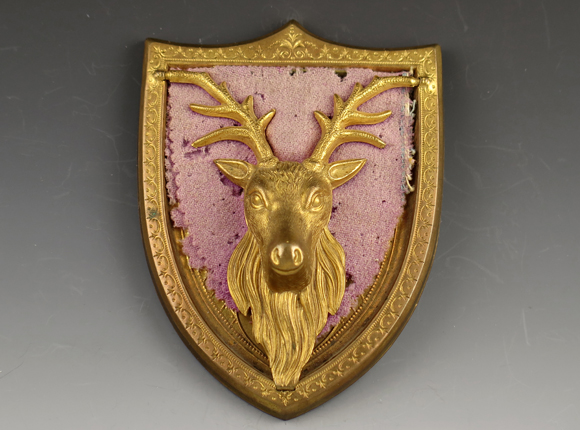
Needle Case

Design Representation
Design Details
Needle Case Type: |
Figural |
Patent/Registered to: |
William Avery & Son - Redditch |
Patent/Design Representation #: |
Ornamental Class1: Metal: #274365 |
Patent/Design Registration Date: |
July 11, 1873 |
Location of Patent/Design Registration: |
The National Archives (TNA) - Kew, UK |
Reference #: |
TNA Representation - BT 43/34/274365
TNA Register - BT 44/3/274365 |
Dimensions: |
6.5 x 1.5 x 9.2 |
Material: |
Brass with fabric insert. Be advised that a number of the Shield style needle cases have been found with a small piece of thick fabric on the
inside where individual needles or pins could be inserted. Many of these appear to be original as the fabrics are very similar. Other examples can be found
on the the Shield with Bird and the Shield with Ladies Head Bust web pages. A special thank you goes to Robert Bleasdale of Bleadales Ltd. auctions in Warwick, UK for
bringing this to our attention and sharing a photo of the Shield with Bird with the interior fabric. |
Name Variations: |
W. Avery & Son - Redditch |
Other Variations: |
a) Shield with Bird
b) Shield with Ladies Portrait Bust
c) Shield with Rose |
Additional Photographs

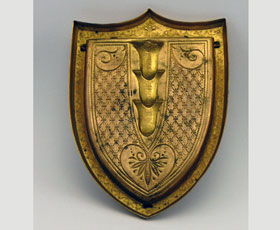
Top open and back views (photos courtesy of Lynda Herrod)
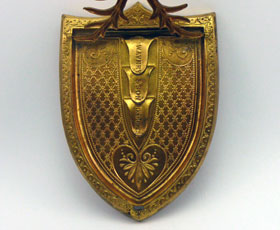
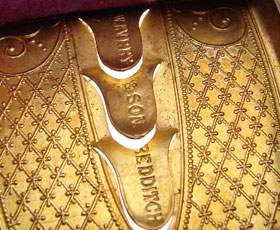
Interior detail and signature detail (photo courtesy of Bunny's Place)
Facts
A stag is a male red deer which is older than five years. It has large, highly branch antlers with the number of branches increasing
with age. The red deer is widespread throughout Britain occurring in many places in the wild, in deer farms for venison and for
ornamental purposes in parks. Deer stalking or hunting is carried out to control herd size and health. A mounted stuffed stag head
has commonly been used decoratively as a hunting trophy. Victorian England has been described as the golden age of taxidermy when mounted
animals became a popular part of décor following displays by fourteen exhibitors at the Great Exhibition of 1851. The vastly improved
methods employed resulting in more lifelike and artistic specimens caught the public imagination and displays particularly of birds were popular
not only with the middle classes but Queen Victoria herself was a collector.

History
The deer family is an important group used in heraldry and of these the stag is the most common. When the stag is depicted front on
or affronty with no neck showing it is described as cabossed. The heraldic shield which originally served to identify a medieval knight
in battle evolved to serve as the decorative and recognisable “coat of arms”, a system of societal recognition overseen by The College of Arms
to this day. The spade shaped shield with two curved indentations on the top edge became popular in the 19th century.
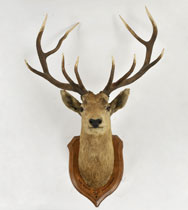
Miscellaneous
Deerstalker was a game played by Victorian children. Two children would be blindfolded one playing the deer while the other was the
stalker. Other children, watching until their turn, would guide the two players to opposite ends of a table. In complete silence
by all, the stalker role was to catch the deer by listening for their movement. Both players were to stay beside the table until the
deer was caught and a new deer began play or, if the time was up without being caught, the deer was the winner.
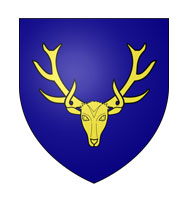
Note: Right side panel text and pictures provided by Lynda Herrod.













